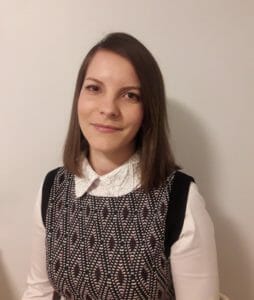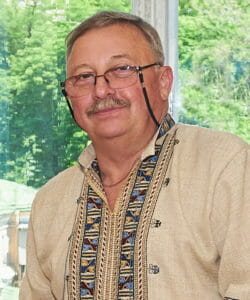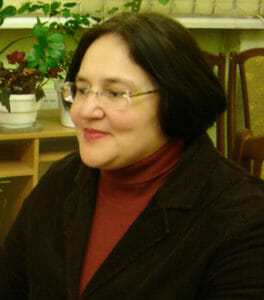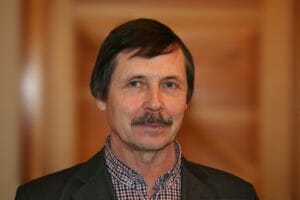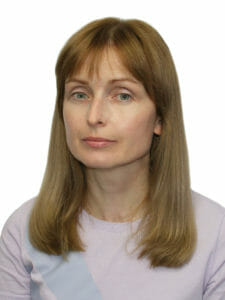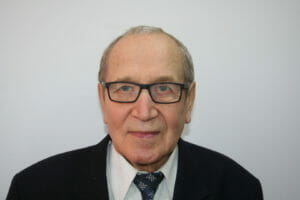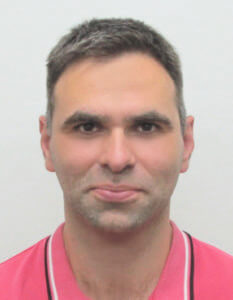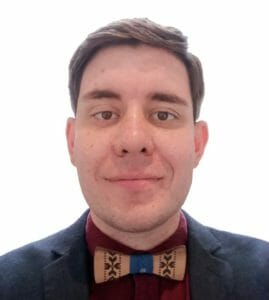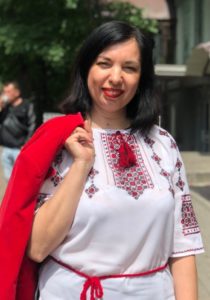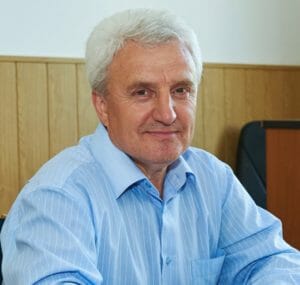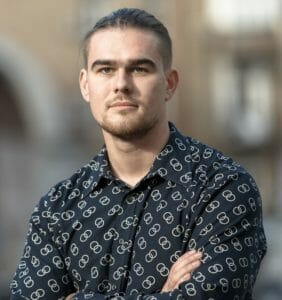Research Grants 2021
The HREC Research Grants Competition is held annually to support academic research on the Holodomor, the publication of research results, the preservation of materials, and the organization of and participation in academic venues. Each year, a new thematic focus is established, though proposals for other topics are considered. The applications are reviewed by a committee of scholars and HREC associates.
-
2021 HREC Research Grants Competition
The Holodomor Research and Education Consortium (HREC) announces its 2021 Research Grants Competition. Grants are intended to support research that expands our knowledge and understanding of the Holodomor; publication and translation of research results; preservation of and increasing access to materials; and organization of and participation in academic forums. Examples of research that could be supported include the policies of foreign governments during collectivization and the Holodomor; the fate of various groups living in Ukraine (ethnic, social, etc.); diaspora communities and their kin in Soviet Ukraine; and the Holodomor at the national and sub-national levels (eg., oblasts, raions, villages). Grants to individuals will not exceed C$7,000.00, with most grants ranging from C$1,000.00 to C$3,000.00 in the past years. HREC also accepts proposals for larger collaborative projects that engage scholars and institutions from both in and outside Ukraine.
Deadline: March 1, 2021
Individual Projects 2021
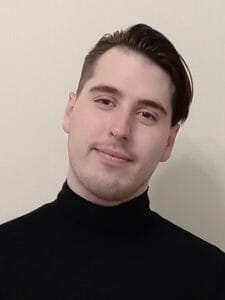
Mykhailo Antropov
Institute of History of Ukraine, National Academy of Sciences of Ukraine
“Exports of Agricultural Products from the Ukrainian SSR during the Holodomor”
This project examines the export of agricultural products from the Ukrainian SSR in 1927-1933, changes in the Soviet agro-export policy, and as a result, the over-export of grain in 1932 that was one of the main reasons for the onset of the Holodomor.
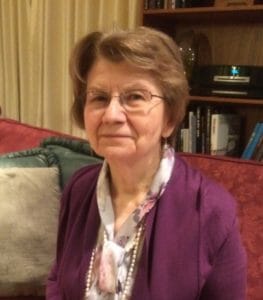
Lana Babij
Independent researcher (USA)
“German Photo Documentation of the Holodomor”
Lana’s research focuses on what are claimed to be the photographs of two German nationals working in the USSR. These same photos were attributed to a variety of named and unnamed sources and sometimes published alongside proven 1920s photos claimed to be taken in 1933. The photos were also used to promote anti-Bolshevism not only in Germany, but in the US; in the latter case, with such editorial ineptness as to serve the purposes of communist sympathizers and Holodomor deniers for decades to come. All photos authenticated during this research as well as supporting documentation related to this story will be added to HREC’s Holodomor Photo Directory.
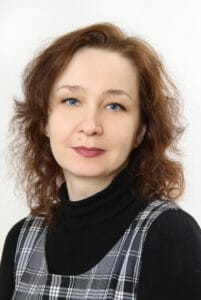
Olha Bakovetska
Kyiv National University of Culture and Arts, Mykolaiv branch
“Materials from Criminal Investigations (Mykolaiv region) as Sources for Studying Protest Movements in Soviet Ukraine on the Eve of and during the Holodomor”
This project focuses on protest movements in Mykolaiv Oblast on the eve and during the Holodomor, as well as the reaction of the local population to such policies of the Soviet totalitarian government as forcible collectivization, criminal policy of grain procurement, dekurkulization. Mykolaiv Oblast is one of the regions that suffered the most from the famine due to the specifics of the region's primarily agricultural economy and large-scale protest movements since the early 1920s.
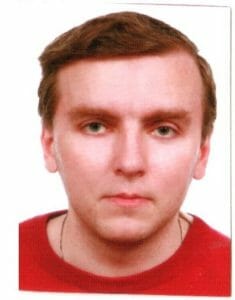
Serhii Blavatskyy
The Press Studies Research Institute of Vasyl Stefanyk National Scientific Library, National Academy of Sciences of Ukraine (Lviv)
“Coverage of the Holodomor in the Ukrainian Emigré Press in Europe (1930s)”
This research project examines the specificity of coverage of the Ukraine’s Great 1932-33 Famine - Holodomor in the Ukrainian émigré press in Europe in the 1930s via a prism of media discourse and narrative studies. The purpose of the project is to show how perceptions, resonance and reactions to Holomodor in the émigré press shaped West European and the Ukrainian émigré public opinion about the Great Famine in the Soviet Ukraine in the 1930s and how the media resonance of the Holodomor contributed in European press “crusade” aimed at securing West European public support and mobilization of aid campaigns for Ukrainian victims.
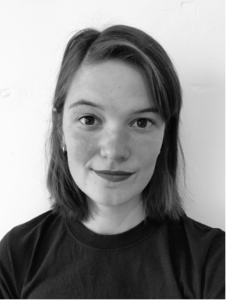
Charley Boerman
Radboud University (The Netherlands)
“The Holodomor in a Global Context: Musealisation, Monumentalisation and Commemoration”
For this project, Charley will conduct fieldwork at various heritage sites and museums in Canada to investigate how the musealisation and commemoration of the Holodomor takes shape outside of Ukraine. The focus of her research is on the ways in which the Holodomor is embedded in and remembered through a globalised human rights discourse, as well as on the iconography and tropes deployed to visualise and narrate the Holodomor in a global context.
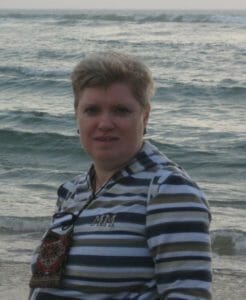
Tetyana Bykova
Institute of the History of Ukraine, National Academy of Sciences of Ukraine
“Visual Sources from the Holodomor Epoch (City of Kyiv and Bucha, Fastiv and Vyshhorod Disctricts of Kyiv Oblast): Identification, Analysis and Interpretation”
The goal of this multidisciplinary project is to discover visual sources to the study of the Holodomor in the local museums of the City of Kyiv as well as of Bucha, Fastiv and Fastic raions of Kyiv Oblast, analyse the practice of their uses in research, museum exhibits and media, if any, to digitize and catalogue previously unknown or little known visual sources (photos, paintings, graphics, etc.) and present recommendations on the potential uses of these sources for he scholars, museum workers and journalists.
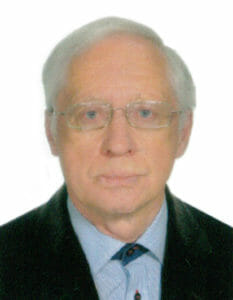
Bohdan Chyrko
Tavrida National V.I. Vernadsky University (Kyiv)
“Ethnic Germans in Ukraine in the Holodomor Era (late 1920s-1930s)”
The goal of this project is to fill in the gap in the history of ethnic German and Mennonite minorities in Soviet Ukraine during the Holodomor in the areas of their historical residence in Ukraine (the territory of the Moldavian Autonomous Soviet Socialist Republic and Volyn region) in the context of the breakup of the NEP, the establishment of the collective farm system, and the forcible grain requisitioning. The specific focus of the study will be on mechanisms of combatting the famine, such as assistance to these communities by foreign charities and reaction to it by the Soviet authorities with the ultimate goal of publishing a collection of the unknown and little-known documents on the topic from the central state archives.
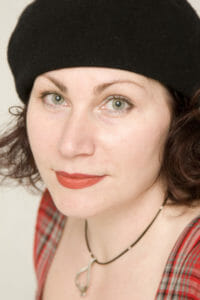
Nani Hohokhiia
Luhansk Taras Shevchenko National University (Starobilsk)
“Children in Mass Campaigns Organized by the State before and during the Holodomor”
The purpose of this study is to determine the main goals, forms, methods and consequences of the Soviet government’s involving children in mass ideological campaigns before and during the Holodomor. Soviet authorities aimed to make the children loyal agents and active leaders of the socialist transformations in accordance with their general ideological goals in the field of social change. The project will employ documents from regional archives and the local children's press to identify the features of the government’s work with children from different regions of Ukraine.
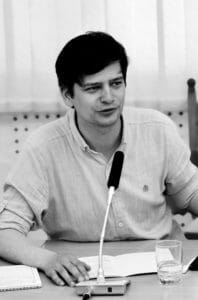
Mykola Horokh
V. V. Tarnovskyi Chernihiv Regional Historical Museum
“Visual Sources from the Holodomor Era Found in Museums of Chernihiv Oblast”
The goal of the project is to discover and catalogue visual sources (primarily photographs) from the period of the Holodomor in the museum collections in Chernihiv Oblast. Unique and often little-known photographic images from 1920s-1930s in Ukraine’s oblast and especially raion-level museums, contain details about the everyday life of the villagers and urbanites, collectivization, dekurkulization and resistance to the Soviet authorities. The wider chronological scope of the search (1920s–1930s) will allow for a more complete and complex recreation of the socio-economic, political and cultural aspects of life of the Soviet Ukrainian society at the time of the Holodomor.
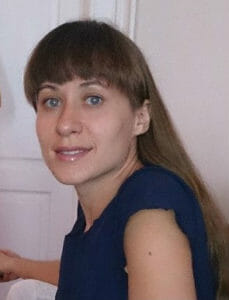
Yulija Hryshchenko
Institute of History of Ukraine, National Academy of Sciences of Ukraine
“Regional Press as Sources for the Study of Everyday Life in Soviet Ukraine during the Holodomor”
Yulija’s project aims at exploring the regional press as an under-researched source of information about the Soviet everyday life during the Holodomor. The specific focus of her research is on the perception of the socio-economic policies of the Soviet leadership by the ethnic minorities, formation of their symbolic understanding of their place in the Soviet society and their “economic identity” under the influence of the official state ideology on local, microlevel.
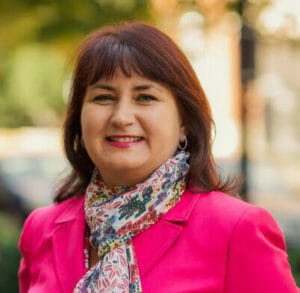
Valentyna Kharkhun
Mykola Gogol State University (Nizhyn, Ukraine)
“Exhibiting the Holodomor in Ukrainian Museums”
This project examines the perception and exhibiting of the Holodomor in Ukrainian museums. The author aims to discover the regional and genre specifics used in displaying the Great Famine and whether the diversity of museums’ representations is continuing to influence the development of the Holodomor as a grand-narrative in Ukrainian memory politics, as well as our common understanding of Soviet victimhood by analyzing activities of memory entrepreneurs, policies of the museums, and the narrative templates in representing the Holodomor.
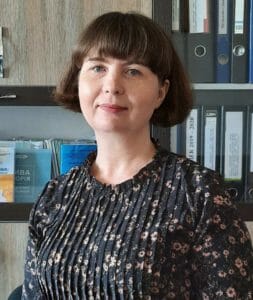
Natalia Kuzovova
Kherson State University
“The Holodomor of 1932-1933 in Kherson Oblast”
The goal of this project is to collect audiovisual sources to the history of the Holodomor on the territory of the contemporary Kherson Oblast and make them available for the wider audiences for scholarly and educational use. The original interviews collected from the witnesses of the Holodomor and their descendants, along with the digital copies of the materials available in the state archives of Kherson Oblast and Kherson regional museum, will be made available to the HREC.
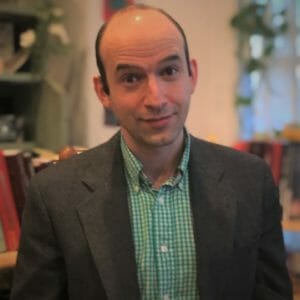
Andrey Shlyakhter
Kennan Institute of the Woodrow Wilson International Center (Washington, D.C) Davis Center for Russian and Eurasian Studies at Harvard University 2021 Fisher Fellow at the Virtual Summer Research Laboratory of the Russian, East European, & Eurasian Center, University of Illinois at Urbana-Champaign.
“Borderness and Famine: Why did Fewer People Die in Soviet Ukraine’s Western Border Districts During the Holodomor?”
This project attempts to explain why the inhabitants of Soviet Ukraine’s western border districts were more likely to survive the Holodomor than their counterparts in the republic’s interior and to determine how the explanation impacts our understanding of the Holodomor, and Soviet history, more broadly. To help answer these questions, the author will consult the documents held at the Branch Archive of the Security Service of Ukraine (Haluzevyi derzhavnyi arkhiv SBU) in Kyiv, including political police and border guard records. Analyzing these records will illuminate the roles of the Kremlin, the political police, and local authorities in the Holodomor; popular survival strategies and their effect on policy decisions; the impact of (real or imagined) foreign military threat and foreign opinion; and the spatial logic of Stalinism.
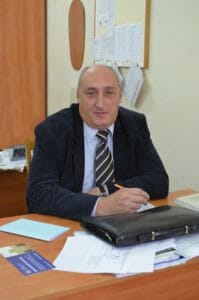
Mykhailo Spodarets
V. N. Karazin Kharkiv National University
“Fairytales and Children’s Literature in the Soviet Ideological Discourse of the Holodomor Era”
This project intends to characterize the ideological prescriptions regarding the Ukrainian children’s literature, main tendencies and themes of the literary publications for children, their place and role in the literature and culture of the 1920s-1930s and their possible role in the organization and the events of the Holodomor and its aftereffects. The sources for this study are the children’s literature from the period of the Holodomor as well as the government and party documents related to the sphere of education and children’s literature, children’s and educational periodicals.
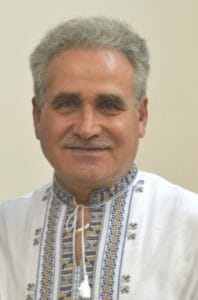
Ivan Zabijaka
Institute of Journalism, Taras Shevchenko National University of Kyiv
“Talalaivkа (Velyki Bubny) District, Chernihiv Oblast, in Conditions of Stalin's "Revolution from Above" and the Holodomor”
This project examines the history of the Holodomor in Talalaivka (Velyki Bubny) raion of Cherhiniv Oblast focusing on socio-economic aspects and the socio-cultural impact of the Holodomor, using as examples particular villages and personalities and based on a variety of primary and secondary sources, including witness testimonies, archival documents, and literature.
Collaborative Projects 2021
Roser Alvarez-Klee
University of Barcelona
Iryna Skubii
Queen’s University (Kingston, ON, Canada)
“The (Un)seen Famine in Soviet Ukraine: The Holodomor through Spanish Eyes”
This project seeks to examine the attitudes regarding collectivization and the Holodomor of 1932–1933 in Spanish political and social landscapes between 1929 and 1936. The social catastrophe in Soviet Ukraine overlapped with the instabilities of the Second Spanish Republic (1931–1936). The absence of diplomatic relationships between Spain and the Soviet Union mirrored the complexity of Spanish perception of the Soviet Union and response to the famine. Analyzing a wide range of primary sources, this project will establish what was the level of awareness about the famine in Soviet Ukraine in Republican Spain and what were the political and social perceptions of the man-made catastrophe in Ukraine and other starving regions of the Soviet Union.
Hennadii Boriak
National Academy of Sciences of Ukraine
Oksana Yurkova
Institute of History of Ukraine, National Academy of Sciences of Ukraine
Kateryna Lobuzina
Vernadsky National Library of Ukraine, National Academy of Sciences of Ukraine
“Identifying Holodomor Era Visual Documents Scattered in Kyiv Oblast”
The researchers long-term goal is to expand the accessible visual documentary sources on the Holodomor era and their geographical representation. They continue the investigation of the photo collections of the local regional museums in those regions of Ukraine which suffered during Holodomor launched in 2020. In 2020, despite the COVID-19 pandemic, they visited 26 local museums, gathered more than 500 digital images of the 1920s–1930s photos and began making these photos accessible at the web-site http://holodomor-era.history.org.ua/. In 2021, they plan to visit 30 local museums in Kyiv oblast to identify interwar photos, make their digital copies, organize and present them online.
Oleksandr Gladun
Ptoukha Institute of Demography and Social Studies, National Academy of Sciences of Ukraine
Nataliia Levchuk
Ptoukha Institute of Demography and Social Studies, National Academy of Sciences of Ukraine
Omelyan Rudnytskyi
Ptoukha Institute of Demography and Social Studies, National Academy of Sciences of Ukraine
“Creation of the "District Passport" in 1932–1933 in Ukraine: The Case of Kyiv Oblast”
Researcher’s goal is to create “passports”, comprehensive socio-economic characteristics, for each “raion”(districts, sub-regional administrative unit) in Kyiv Oblast of the Soviet Ukraine, in the period before, during, and after the Holodomor in 1932-33 using the statistics and data from the state authorities available in the libraries and archives. The resulting database of the information about each raion will serve as a template for further creation of the comprehensive database of information about raions in other oblasts of Ukraine.
Artem Kharchenko
National Technical University “Kharkiv Polytechnic Institute”
Oleksii Chebotarov
University of St. Gallen (Switzerland) and Center for Urban History in East-Central Europe (Ukraine)
“Everyday Practices of Orphanages in Soviet Ukraine during the Holodomor: Creation of the Soviet Man (1928-1935).”
The study analyzes the everyday formalized and informal practices of the functioning of Soviet orphanages which were among the focal points of the Holodomor in 1928-1935 with specific focus on forcible transfer of children in orphanages in Kharkiv, Kyiv, Chernihiv, Odessa, and Kamianets-Podilskyi, their geography allowing to trace the republican level of policy. The study will answer the question of how the system affected the children and teens whom theorists and practitioners from the authorities tried to turn into “Soviet people”.
Serhii Vodotyka
Kherson State University
Hennadiy Tsybulenko
Kherson State University
Olha Pravotorova
Kherson State University
Iryna Ryzhenko
Kherson State University
“Legal Evaluation of the Destruction of Civil Society as a Genocidal Policy in 1932-1933 in Southern Ukraine”
This project aims to provide a historical and legal assessment of the criminal policy of the Soviet totalitarian regime to destroy civil society structures of the peasantry during the Holodomor genocide of 1932-33 in southern Ukraine, to prove the intent and motives of the crime, determine the object and substance of the crime, the characteristics of the mechanism of criminal policy and characterize the subjective side of the crime with the specific focus will be on the deliberate destruction of the political, economic, social and spiritual institutions of civil society in rural areas.
Tetyana Zabolotna
Institute of the History of Ukraine, National Academy of Sciences of Ukraine
Oleksandr Lysenko
Institute of the History of Ukraine, National Academy of Sciences of Ukraine
Oleksandr Maievskyi
Institute of the History of Ukraine, National Academy of Sciences of Ukraine
“Stepan Sosnovy, The Life of a Ukrainian Researcher in the Context of the Holodomor”
This projects goal is to study the manuscripts and publications in periodicals during the Nazi occupation of Ukraine by the first Ukrainian Holodomor researcher, Stepan Sosnovy as sources for analyzing the memory of the Holodomor during the Nazi occupation.

